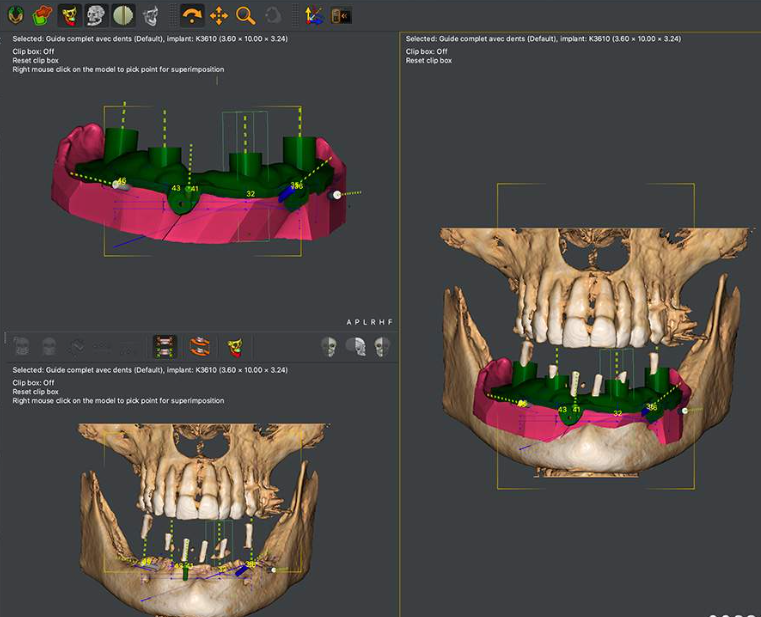
However, investing in a CBCT machine is a significant decision for any dental practice, as it involves a substantial upfront cost and ongoing maintenance expenses. Therefore, it is important to understand how long it takes to achieve a full Return on Investment (ROI) with CBCT technology and what factors influence the timeline.
ROI is the ratio of the net profit to the initial cost of an investment. It measures how effectively and efficiently a practice uses its resources to generate income. A higher ROI means a faster and greater return on the investment.
The time it takes for a dentist to achieve a full ROI after purchasing a CBCT machine can vary widely and depends on several factors. Some of these factors are related to the practice’s characteristics and operations, while others are influenced by external market conditions and opportunities. Here are some of the key considerations that affect the timeline for realizing ROI with CBCT technology:
- Shop Our CBCT Machines -
- Patient Volume: The number of patients requiring CBCT scans significantly influences ROI. Practices with a higher patient volume requiring advanced diagnostics, such as oral surgeons or orthodontists, may see a faster ROI compared to general dental practices with lower imaging needs. However, even within the same specialty, patient volume can vary depending on the location, reputation, and marketing efforts of the practice.
- Procedure Billing and Reimbursement: The ability to bill for CBCT procedures and the reimbursement rates play a crucial role in achieving ROI. Understanding the insurance landscape and having a clear strategy for coding and billing can impact the speed at which the investment is recouped. Practices should also consider the self-pay options and payment plans for patients who are not covered by insurance or have high deductibles.
- Market Demand: Practices in regions with a high demand for advanced diagnostic imaging may experience a faster ROI with CBCT technology. Assessing the local market and patient demand for CBCT services is essential for estimating the potential return on the investment. Practices should also monitor the trends and changes in the market, such as the emergence of new competitors or the introduction of new technologies, that may affect the demand for CBCT services.
Referrals and Specialist Collaboration: Collaboration with specialists and referrals from other healthcare professionals can contribute to increased CBCT utilization and revenue. Practices that establish strong relationships and communication channels with referring dentists and specialists can enhance their reputation and attract more patients who need CBCT scans. Practices that offer CBCT services to other dentists and specialists can also generate additional income and expand their network.
- Additional Revenue Streams: A dental CBCT machine enables the expansion of services, such as guided implant placement, orthodontic treatment planning, and endodontic evaluations. Practices that leverage these additional revenue streams can enhance the speed and magnitude of ROI with CBCT technology. By offering more comprehensive and personalized care, practices can also increase patient satisfaction and loyalty, leading to more referrals and repeat visits.
- Equipment Utilization: Efficient and consistent utilization of the CBCT machine is crucial for achieving ROI. Practices that optimize scheduling and ensure the machine is used regularly for relevant cases contribute to a faster and higher return on the investment. Practices should also train their staff on how to operate the machine properly and safely, and how to handle and store the images securely and compliantly.
- Patient Education and Acceptance: Patient education about the benefits of CBCT scans and their role in treatment planning is vital for achieving ROI. Practices that effectively communicate the value of advanced diagnostics and achieve high patient acceptance can accelerate the ROI process. Practices should also address any patient concerns or questions about CBCT scans, such as the cost, the radiation exposure, and the procedure duration.
- Competitive Advantage: In competitive markets, having a CBCT system can be a differentiator that sets a practice apart from its rivals. Practices that position themselves as leaders in advanced diagnostics and showcase their expertise and experience with CBCT technology may attract more patients seeking comprehensive and quality care, influencing the pace and scale of ROI.
- Maintenance and Service Agreements: The reliability and maintenance of the CBCT machine play a role in achieving ROI. Practices that invest in service agreements, ensuring minimal downtime and optimal performance, can avoid disruptions in imaging services and maintain a steady income stream. Practices should also consider the warranty, technical support, and software updates offered by the CBCT manufacturer or vendor.
Considering these factors, practices that strategically plan for the integration of CBCT technology, actively market its benefits, and align its use with patient needs and specialty services are likely to achieve a faster and higher return on their investment. CBCT technology is not only a valuable tool for improving clinical outcomes and patient satisfaction, but also a profitable investment for enhancing practice growth and profitability.
Talk to us today to learn more!
We're always here for you, committed to earning your trust and business every day.
How Long Does It Take to Achieve ROI with CBCT Technology?